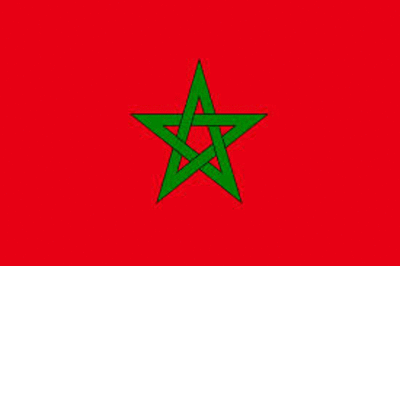 Idriss I founded Fez, Morocco, around 789 on the banks of the
River Fez. His son, aptly named Idriss II, built another town around
808. A decade later, hundreds upon hundreds of Muslim families-some
refugees-moved here from as far off as Cordoba and Tunisia.
Idriss I founded Fez, Morocco, around 789 on the banks of the
River Fez. His son, aptly named Idriss II, built another town around
808. A decade later, hundreds upon hundreds of Muslim families-some
refugees-moved here from as far off as Cordoba and Tunisia.This influx formed a territorial protectorate and soon paved the way for Islam in Morocco. Almost three hundred years later, the Almohads built a wall, uniting the two cities. Fez knew no boundaries, booming to an economic, spiritual and cultural nucleus of North Africa.
The economic potential of Fez was perhaps the most advantageous. Today, craftsmen conduct business in much the same way as yesteryear. The Fez tanneries, by and large, is one of the best examples of this retained artistry. Tanning is the process of turning animal hides-namely goat, sheep, cow and camel-into soft leather.
 The hides of the above
mentioned animals first must have their flesh and hair removed. The
hides are then placed into large vats-hearsay voices say it's diluted,
acidic pigeon excrement-then soaked in vegetable dye twice over. After
rinsing and drying the hides, they are ready to be dyed into a number of
various colors.
The hides of the above
mentioned animals first must have their flesh and hair removed. The
hides are then placed into large vats-hearsay voices say it's diluted,
acidic pigeon excrement-then soaked in vegetable dye twice over. After
rinsing and drying the hides, they are ready to be dyed into a number of
various colors.Tanners have used the vats-which can be seen from the terraces and local rooftops around them- for centuries to soak the hides after hair removal. The soaking solution-if not pigeon dung-is obtained from the pomegranate or mimosa tree. The hides are then softened even more with water rinsing and finally placed in fat solutions.
Anywhere, including rooftops, sidewalks and surrounding foothills, makes for makeshift drying racks. Just as you can see the hides laid out to dry, so you can whiff the fetor for several blocks.
 The
hides are often dyed using natural pigments from minerals, rocks and
plants. Today, though, chemical dyes are used just the same. You can't
really tell the difference either. If you're shopping in the many souks
or leather shops, the shop owners might tell you the truth, or might
simply tell you what you want to hear. A trusted tour guide or tour
operator can distinguish natural versus chemical dyes.
The
hides are often dyed using natural pigments from minerals, rocks and
plants. Today, though, chemical dyes are used just the same. You can't
really tell the difference either. If you're shopping in the many souks
or leather shops, the shop owners might tell you the truth, or might
simply tell you what you want to hear. A trusted tour guide or tour
operator can distinguish natural versus chemical dyes.The tannery is found in the old Fez, now a UNESCO World Heritage Site. Restoration and rebuilding have given Fez the much-needed face lift seen today. You must walk through the mazes in order to see the tanneries, as the passageways, tunnels, and narrow streets make driving out of the question. Come on a Morocco tour and visit the contemporary yet antiquity ambiance of Fez.
do you like this؟ share! ↓















